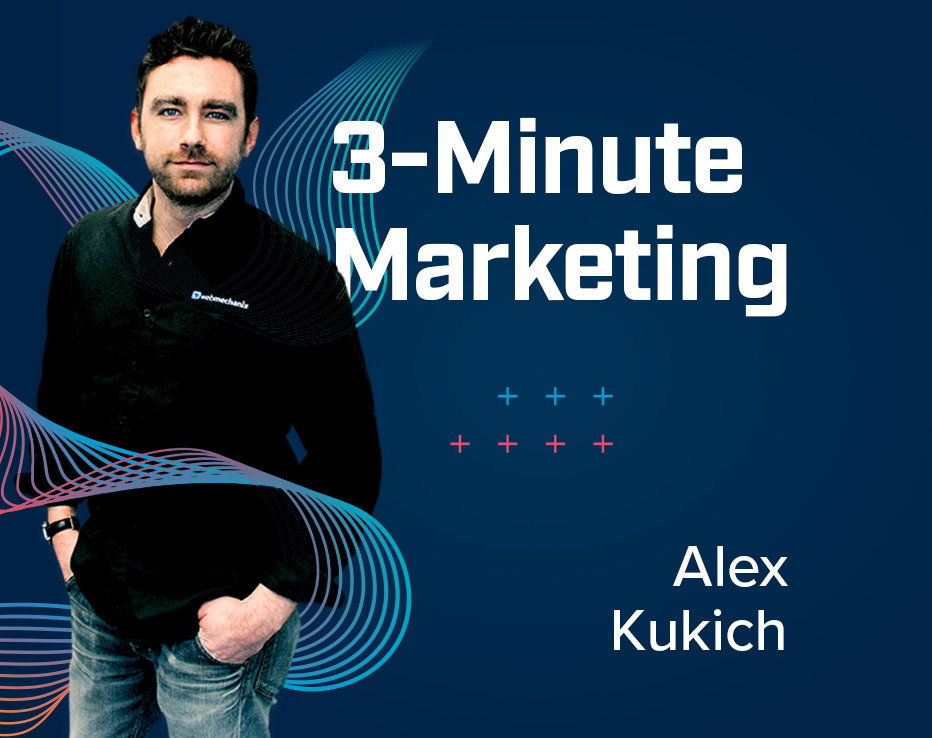
How to get started with connected TV (CTV) ads
Traditional TV advertising feels like throwing spaghetti at the wall. You’re casting a wide net, but you never know what kinds of leads you’ll get in return.
But that’s all changing with Connected TV. Today, you can buy TV ads with just as much specificity as you would on Google and Facebook. And some of my biggest clients have benefited greatly from adopting CTV strategies earlier than their competitors.
In this guide, I’m going to show you where the opportunity lies in CTV and how you can leverage it in your marketing mix. I’ll explain how it works, the major players, and the benefits you can look forward to.
Book a 30 minute call
Reserve 30 minutes with a strategist and get 30 hours worth of value.
What is CTV?
CTV stands for Connected TV. CTV is a type of media that allows us to advertise in premium television spots without setting up television advertising.
With traditional TV ads, you must go through the long process of getting your ads approved by CBS, NBC, ABC, or any other major programming network. Plus, you must buy a program on a specific station for a specific day and time — even if you’re not 100% sure your audience is watching it.
But with CTV, you get easy access to specific programs your audience is watching. You can refine your targeting based on interest or behavior (like “military” or “parents”), and you can retarget them.
Is there a difference between CTV and OTT?
Yes and no — they are two parts of the same bucket. OTT, or Over The Top, refers to ads served on tablets, phones, laptops, and desktops. CTV refers to ads served on Smart TVs, video game consoles, and Amazon Echo.
The ultimate difference is that OTT can go further down-funnel than CTV. Aside from that, it’s really about deciding whether you want exposure on TVs, tablets and phones, or all of the above.
In reality, most buyers buy OTT and CTV together. And I use those terms interchangeably because they are essentially the same when you enter the buying stage.
What are the benefits of CTV, and what is CTV not the best for?
With CTV, you get:
- Low CPMs
- High audience impressions
- New leads
- Higher quality inventory (some vendors have a less competitive market share)
- Better knowledge of your audience you can apply to other vendors
A lot of CTV inventory is done through second and third party partners, allowing them to have their own unique inventory for each show.
Say you want to buy on Apple TV. If you buy through a third party vendor, they’ll have a unique inventory that other second party inventory dealers won’t have.
Another thing to keep in mind is that you can apply your learnings from one platform to another. So, for example, once you know that they are watching a specific show like Family Guy on Hulu, you can target that show on other second or third party platforms.
Now, there are a couple of cons to CTV I want to mention:
- It’s not great as a down funnel metric (CTV is a TOFU play)
- Attribution can be challenging
CTV may not be the best for you if you’re looking to lead your audience directly to a conversion. Think of it as more of a top-of-funnel or mid-funnel awareness play. It’s great for cracking open a whole new audience segment and getting them engaged with your brand — especially for B2B companies. Viewers may not expect to see ads about work-related platforms, giving you a leg up in terms of exposure.
Another thing to pay attention to is how each platform does attribution, and I can tell you that you get what you pay for. If you’re intentionally buying a $5 CPM, you won’t get the high-quality attribution you’d get with Roku or other bigger, more expensive platforms.
Why should I use CTV?
I have some exciting stats to back up why CTV and OTT should be on your radar:
- OTT offers all the benefits of CTV at much lower barriers to entry (cost, lenient approval processes, direct targeting options)
- Roughly 90% of Americans between 18 and 34 years old access TV via the internet
- CTV is accessible in 92% of US homes
- Over $18B was spent in CTV advertising in 2022
- 89M Americans planned to cut the cord on traditional TV at the end of 2022
That last number has come a long way. A couple of years ago, nearly 300M people were watching traditional TV. This year it’s below 150,000 for the first time since the 50s. Most people are moving away from cable, dish, and satellite providers and adopting CTV. From now on, CTV will be an even bigger platform than it already is.
CTV top performers
CTV has some really high performers, so I want to share their projected growth into 2024.
Across the country, we’re seeing at least four platforms that will have over 100M viewers — Netflix, Amazon Video, Hulu, and Disney — and two platforms with over 25M viewers: Apple TV and ESPN+.
ESPN recently signed the NHL and has exclusive rights to most NCAA platforms, so their numbers could jump in the coming years.
There is one caveat in this chart. The top performer is not insertable yet, but they will be by 2024.
CTV FAQs
Do you need a massive budget for CTV?
Quick answer: no. CTV is very affordable. I ran my first CTV campaign for $5,000 through Hulu, and I got several months of productive testing out of that. One caveat is that some first-party vendors have a minimum investment requirement.
For instance, Roku’s minimum is $50,000. But in that $50k, you get access to premium inventory and reporting for the entire quarter. That gives you invaluable behavioral and program insights that you can leverage elsewhere.
What’s a good flight length for CTV?
Usually about two months. But we recommend three months to optimize a bit more. The first month, you’ll just learn about your audience and figure out how the platform works. You can run A/B tests and other experiments the following two months to see what works best.
I don’t recommend running a second- or first-party if you’ve never done CTV before. You don’t know what your audience really watches, and it’s easy to get caught up in brand names. Smaller third-party vendors can help you get started with a media flight and campaign wrap-up.
From there, you can find the best mix of relevance and quality.
What if I don’t have budget for a professional shoot?
That’s ok. User-generated content works extremely well and isn’t expensive. In fact, UGC often performs just as well as professional shoots done by a creative agency specifically for television.
The reason why UGC works is that it feels authentic. It’s like your friend is talking to you about a product they like or a recent great experience they had.
The key to UGC is ensuring the video is shot at 1080p or higher, with a spotlight of 15 seconds, 30 seconds, and 60 seconds.
Where do I start?
There’s a lot to digest, and that can be overwhelming. The good news is I have a few tips to share with you now, and I know that once you get going with CTV, you’ll learn new things with every campaign.
Ad targeting and creation
CTV allows for intricate layering of behaviors, so you want to model your creative after that. In other words, if you’re looking to market to professionals like nurses, doctors, or military members, make sure the people in your ads are in uniform.
Remember to integrate people’s interests, too. For instance, consider an animated spot if you’re marketing on an animated program.
How to buy CTV
There are three ways to buy:
- Directly through the platform – Going this route gives you the lowest CPMs and access to the cream of the crop inventory. But if you want a spot on something like House of Dragon, you’ll need clearance from network executives directly.
- DSP – DSPs, or second party vendors, are unique because they aren’t limited to a single platform, and there’s no middleman to pay. Think of it like buying Google or Facebook Ads where you’re doing everything yourself. DSPs are for marketers who are more experienced with CTV.
- Through a third party vendor – third party vendors have access to multiple platforms and provide direct consultations with experts who can help you figure out where your audience lives. This is what we’re currently using at WebMechanix.
Things to keep an eye out for
There are a few things that distinguish CTV from traditional digital marketing, including:
- Campaign lead times – Typically, when we shut something off in Facebook or Google Ads, it’s immediate. CTV has longer lead times, so it can take a day to two to fully pull something off television. And if you’re doing standard broadcast cable, it takes even longer (about five days).
- Ad quality – You’ll need a video asset of at least 1080p or higher. It’s not necessarily a hang-up, but it’s something to keep your eye on.
- Reach – Reach drastically differs by platform. Even two vendors with the same platform may not access the same inventory or audience.
- Impressions – This may sound dumb, but it’s not something you think about until you get burned by it. Not all CTV vendors count impressions as one-to-one. For example, CBS does what’s called “double account impressions.” They assume that whenever one person is watching, their friend or partner, or family member is watching, too.
Top ad-insertable platforms
The biggest ad-insertable platform is by far the Disney+ bundle. In reality, it’s three separate platforms, Disney+, Hulu, and ESPN+, but Disney owns them all, so they’re grouped together. To buy spots on any of these, you have to go through House of Mouse.
Apple TV is another major player in the CTV field right now. And so is Prime Video, which has grown significantly over the past couple of months. YouTube TV is another rapidly growing platform, and gained a number of users over the pandemic.
Peacock has seen upticks lately, too. They have rights to Notre Dame football games and WWE premium events, giving them massive reach. They get over a million impressions per show.
Paramount+ is the last of the bigger ad platforms, and it’s growing substantially as well.
I do want to add that Netflix might soon be a premium player as well. When they join the squad, they’ll likely reshape the CTV landscape.
Other CTV opportunities
There are several other up-and-comers that you should consider as well, such as:
- Tubi
- Pluto
- Sling
- Discovery+
- Hallmark Movies Now
- Roku
- Crackle
Tubi and Pluto are smaller platforms with large inventories. I describe them as kind of like Netflix but without inserts. One of the benefits of using these two platforms is that they produce sub-$10 CPMs if you target correctly.
Hallmark Movies Now sounds like a weird one, but at certain times of the year, everyone watches a Hallmark movie — in December and July (for Christmas in July). When I ran Hallmark for cable television, we could get 3M impressions from a 30-second spot for less than $20,000.
Discovery+ gives you access to the entire Discovery Network. And Sling, Crackle, and Roku are more medium-sized vendors to evaluate. One of the reasons you might choose one of these vendors is because of their premium reporting and the fact that they give you advice.
I ran a Roku campaign for Penn State at my previous agency, and we didn’t know what we were looking for. But when I got into the backend, I saw reports that broke down how everything worked.
Turns out, the most successful programs were adult animations, like Family Guy and South Park. So we took those learnings elsewhere. Although we paid a little more upfront to hit Roku’s requirement, it was worth the in-depth knowledge.
Say you’re interested in CTV. How can you get started?
One of the best ways to jump into CTV is to use experts to your advantage. WebMechanix has a partnership with tvScientific, a premium third party vendor.
They guide you through selecting the right inventory and building out your audience. If you’re more experienced with CTV, you could adjust their bundles with a premium package or buy your own ads on their private plan.
Regardless of the plan you choose, you’ll get a dashboard that looks like this:
It shows everything from impressions to site visits, to calls per visit, to CPM. It even shows your TV ROAS, a metric I rarely see tracked on other platforms. Five years ago, this level of integration was virtually impossible. But now that we have these KPIs, we can learn what works best and where to continue pressing forward.
In addition, tvScientific has “CTV Targeting Segments” functionality that lets you hone in on online and offline behaviors. Maybe your audience has a bunch of hikers, people who are into baseball, or others who play chess.
Within tvScientific, you can target those behaviors along with demographics like gender, age, household, income, zip code, and more. You can even create custom segments to go after. And if you set up campaigns and place your pixels correctly, you can also do web-to-TV retargeting.
Impress your CEO with CTV results
Every marketer is trying to make their mark early in the year. One fantastic way to grab your CEO’s attention is to embrace web-to-TV retargeting. CEOs are normally impressed when they see ads everywhere. But if they see your ad on TV without killing your marketing budget, you’ll get major kudos.
For more information on how to use CTV and OTT to your advantage, schedule some time with my team at WebMechanix. And for more cutting-edge digital marketing tips and tricks, head to our YouTube channel or sign up for our next Growth Clinic. They happen every Wednesday at noon Eastern.
Most newsletters suck...
So while we technically have to call this a daily newsletter so people know what it is, it's anything but.
You won't find any 'industry standards' or 'guru best practices' here - only the real stuff that actually moves the needle.







